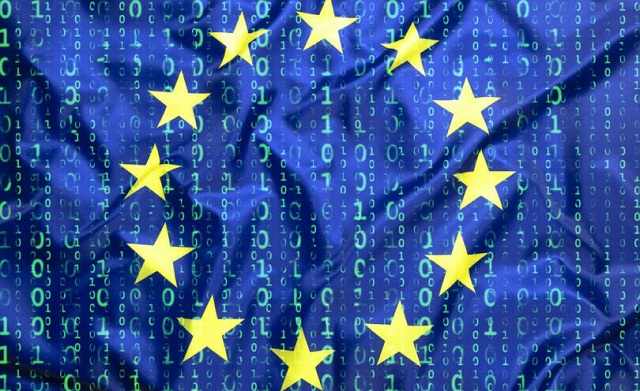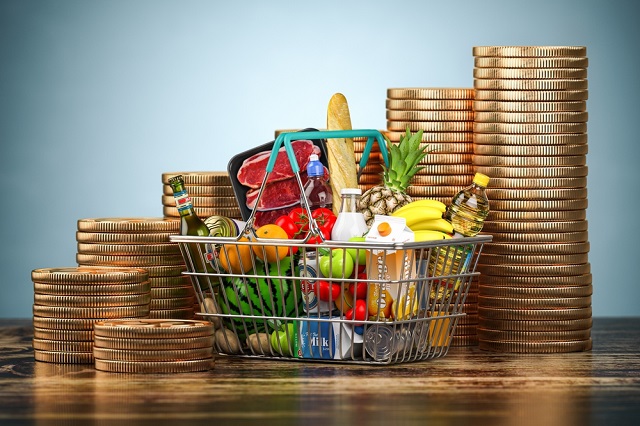Business
How the EU could combine carbon passports, digital ID, and social credit for every product

From LifeSiteNews
The European Union is going deep with its plans to introduce digital IDs across industries. Tying a form of digital ID to all products would make the introduction of carbon social credit scores easier to implement.
The concept of “carbon passports,” proposed as a measure to combat climate change, has, for a while now, raised significant concerns regarding civil liberties. These passports are designed to track an individual’s carbon footprint, including travel, energy consumption, and lifestyle choices. While their intention is to encourage environmentally friendly behaviors, they present a substantial threat to personal privacy by enabling continuous monitoring of personal activities.
This intrusion into privacy is not the only issue; carbon passports could potentially lead to discriminatory practices. Those in lower-income brackets, who often have limited access to green alternatives, might find themselves unfairly penalized. This system risks exacerbating social inequalities by disproportionately affecting those less financially equipped to make eco-friendly choices.
Furthermore, carbon passports could restrict movement and personal autonomy. Limiting travel or certain activities based on carbon usage might create a situation where only the wealthy, who can afford carbon offsets or sustainable options, maintain their freedom. This scenario paints a disturbing picture of environmental responsibility being accessible only to those with financial means.

Another concern is the centralization of power in the hands of entities controlling the carbon data. This centralization could lead to a slippery slope where tools designed for climate control evolve into instruments of more oppressive surveillance and control. The balance between addressing environmental concerns and maintaining civil liberties is delicate and crucial.
As part of the push towards carbon passports, a new idea – tying a form of digital ID to all products is also being pushed. It makes the introduction of carbon social credit scores easier to implement.
The European Union is going deep with its plans to introduce digital IDs (in this case, “digital product passports, DDPs”) across industries. DDPs specifically refer to apparel, accessories and electronics.
Brands are now starting to work on integrating the tech – that the European Commission says is necessary for the greater good of citizens, such as meeting “sustainability goals” – the so-called green deal, carbon emissions, all the things – and then there’s access to services and contactless payment.

Critics, on the other hand, say it’s simply yet another way to abuse consumers by harvesting even more of their data. The opponents’ fears appear to rely on solid facts since some of the data collected thanks to the EU’s proposed scheme will profile people based on their behavior, preferences, and even the value of their “resale profile.”
The deadline mentioned is as early as 2026 – that’s how soon brands would have to incorporate digital passports into their products.
And, don’t expect any resistance from brands. Reports are saying that they are working hard to meet the deadline of meeting what is referred to as the European Commission’s “real-world uses for digital identities.”
READ: EU claims digital ID wallet will be voluntary. India said the same before it became mandatory
On the side of the fashion industry, there will be the need to let the EU know – no longer voluntarily – about how they manufacture items, organize their supply chains, and the materials used.
Well, don’t expect brands to only implement the tech to make the EU feel good about itself. “Brands currently testing the technology are figuring out ways for it to collect customer data and add perks beyond the point of purchase,” writes Vogue Business.
Already trying to go a step above linking physical items with digital identity – as is the case with QR and NFC – and meet EU goals are the likes of Balenciaga, RealReal, and Boss, the article mentions.

And unlike that “old tech” that was there mostly to facilitate and protect transactions, manufacturers and customers, Mojito CEO Raakhee Miller had this interesting take on what’s referred to as the upcoming, “physical first” method: it “not only enhances the product’s value,” said Miller, “but also deepens consumer engagement.”
So, how deeply does the EU – and brands following its diktat – want to “engage” customers, other than people handing over money for a product they buy? This is where what’s basically data harvesting and mining comes into play, even if it is explained in fancy (and unsurprisingly, equally meaningless) terms like “phygital goods” and “metaverse approach.”
But, so to speak, the proof is in the word salad: the point is to have services and use cases “more anchored in client needs.” And clearly, to know what those needs are, one must first better know the client. Meaning, beyond what the client is currently comfortable sharing with multinational conglomerates.
Can’t we all just buy what we want, and move along? Please?
Not so fast, the EU says, and people like Vestiaire Collective VP of Partnerships Laura Escure explain it by no less than what might seem to many as basically questioning the customers’ cognitive abilities.
“The barriers around Web3 were not helping consumers to think thoroughly about luxury,” Escure is quoted.
READ: World Bank president advocates global digital ID scheme at tech summit
And did you know that if you dish out a lot of money on a luxury product, there’s a whole “story” behind it – beside the one in your bank statement? That’s how Aura Blockchain Consortium CEO Romain Carrere wants you to think about the situation.
“We believe in a future where every customer feels connected to the story behind their products, and the DPP is the key to unlocking that narrative. It’s not just a digital passport, it’s a journey of trust and empowerment for every consumer,” said Carrere.
But mostly, it would seem, it’s a narrative. There to empower itself, and those in positions of power, rather than the customer.
Back in EU’s bureaucracy, the digital product passport proposals first saw the light of day in the spring of 2022, naturally, as “sustainability” enhancing mechanisms related to products, and about a year later, this was officially presented on the European Commission website as a way to share key information about a product.
The information would be shared “across all the relevant economic actors,” a press release said in May 2023. Things are happening in this space under the Proposal for Ecodesign for Sustainable Products Regulation (ESPR).
The EU claims its goals are to boost what it calls circular economy, material and energy efficiency, and extend product lifetimes, as well as the way waste from those products is eventually handled.
The bloc also declares some grand ambitions here – like creating new business opportunities – “based on improved data access,” though.
And the EU is not above putting down consumers either, while at once working to elevate the level of data scrounged off of them. The DDP scheme, the Commission says, will “help consumers in making sustainable choices.”
And, for now – “allow authorities to verify compliance with legal obligations.”
Reprinted with permission from Reclaim The Net.
Automotive
Canada’s EV gamble is starting to backfire

Things have only gone from bad to worse for the global Electric Vehicle industry. And that’s a problem for Canada, because successive Liberal governments have done everything in their power to hitch our cart to that horse.
Earlier this month, the Trump Administration rolled back more Biden-era regulations that effectively served as a back-door EV mandate in the United States. These rules mandated that all passenger cars be able to travel at least 65.1 miles (and for light trucks, 45.2 miles) per gallon of gasoline or diesel, by the year 2031. Since no Internal Combustion Engine (ICE) vehicle could realistically conform to those standards, that would have essentially boxed them out of the market.
Trump’s rolling them back was a fulfillment of his campaign promise to end the Biden Administration’s stealth EV mandates. But it was also a simple recognition of the reality that EVs can’t compete on their own merits.
For proof of that, look no further than our second bit of bad news for EVs: Ford Motor Company has just announced a massive $19.5 billion write-down, almost entirely linked to its aggressive push into EVs. They’ve lost $13 billion on EVs in the past two years alone.
The company invested tens of billions on these go-carts, and lost their shirt when it turned out the market for them was miniscule.
Ford’s EV division president Andrew Frick explained, “Ford is following the customer. We are looking at the market as it is today, not just as everyone predicted it to be five years ago.”
Of course, five years ago, the market was assuming that government subsidies-plus-mandates would create a market for EVs at scale, which hasn’t happened.
As to what this portends for the market, the Wall Street Journal argued, “The company’s pivot from all-electric vehicles is a fresh sign that America’s roadways – after a push to remake them – will continue to look in the near future much like they do today, with a large number of gas-powered cars and trucks and growing use of hybrids.”
And that’s not just true in the U.S. Across the Atlantic, reports suggest the European Union is preparing to delay their own EV mandates to 2040. And the U.K.’s Labour government is considering postponing their own 2030 ICE vehicle ban to align with any EU change in policy.
It’s looking like fewer people around the world will be forced by their governments to buy EVs. Which means that fewer people will be buying EVs.
Now, that is a headache for Canada. Our leaders, at both the federal and provincial levels, have bet big on the success of EVs, investing billions in taxpayer dollars in the hopes of making Canada a major player in the global EV supply chain.
To bolster those investments, Ottawa introduced its Electric Vehicle mandate, requiring 100 per cent of new light-duty vehicle sales to be electric by 2035. This, despite the fact that EVs remain significantly more expensive than gas-and-diesel driven vehicles, they’re poorly suited to Canada’s vast distances and cold climate, and our charging infrastructure is wholly inadequate for a total transition to EVs.
But even if these things weren’t true, there still aren’t enough of us to make the government’s investment make sense. Their entire strategy depends on exporting to foreign markets that are rapidly cooling on EVs.
Collapsing demand south of the border – where the vast majority of the autos we build are sent – means that Canadian EVs will be left without buyers. And postponed (perhaps eventually canceled) mandates in Europe mean that we will be left without a fallback market.
Canadian industry voices are growing louder in their concern. Meanwhile, plants are already idling, scaling back production, or even closing, leaving workers out in the cold.
As GM Canada’s president, Kristian Aquilina, said when announcing her company’s cancellation of the BrightDrop Electric delivery van, “Quite simply, we just have not seen demand for these vehicles climb to the levels that we initially anticipated…. It’s simply a demand and a market-driven response.”
Prime Minister Mark Carney, while sharing much of the same environmental outlook as his predecessor, has already been compelled by economic realities to make a small adjustment – delaying the enforcement of the 2026 EV sales quotas by one year.
But a one-year pause doesn’t solve the problem. It kicks the can down the road.
Mr. Carney must now make a choice. He can double down on this troubled policy, continuing to throw good money after bad, endangering a lot of jobs in our automotive sector, while making transportation more expensive and less reliable for Canadians. Or he can change course: scrap the mandates, end the subsidies, and start putting people and prosperity ahead of ideology.
Here’s hoping he chooses the latter.
The writing is on the wall. Around the world, the forced transition to EVs is crashing into economic reality. If Canada doesn’t wake up soon, we’ll be left holding the bag.
Business
There’s No Bias at CBC News, You Say? Well, OK…

It’s been nearly a year since I last wrote about the CBC. In the intervening months, the Prescott memo on bias at the BBC was released, whose stunning allegations of systemic journalistic malpractice “inspired” multiple senior officials to leave the corporation. Given how the institutional bias driving problems at the BBC is undoubtedly widely shared by CBC employees, I’d be surprised if there weren’t similar flaws embedded inside the stuff we’re being fed here in Canada.
Apparently, besides receiving nearly two billion dollars¹ annually in direct and indirect government funding, CBC also employs around a third of all of Canada’s full time journalists. So taxpayers have a legitimate interest in knowing what we’re getting out of the deal.
Naturally, corporate president Marie-Philippe Bouchard has solemnly denied the existence of any bias in CBC reporting. But I’d be more comfortable seeing some evidence of that with my own eyes. Given that I personally can easily go multiple months without watching any CBC programming or even visiting their website, “my own eyes” will require some creative redefinition.
So this time around I collected the titles and descriptions from nearly 300 stories that were randomly chosen from the CBC Top Stories RSS feed from the first half of 2025. You can view the results for yourself here. I then used AI tools to analyze the data for possible bias (how events are interpreted) and agendas (which events are selected). I also looked for:
- Institutional viewpoint bias
- Public-sector framing
- Cultural-identity prioritization
- Government-source dependency
- Social-progressive emphasis
Here’s what I discovered.
Story Selection Bias
Millions of things happen every day. And many thousands of those might be of interest to Canadians. Naturally, no news publisher has the bandwidth to cover all of them, so deciding which stories to include in anyone’s Top Story feed will involve a lot of filtering. To give us a sense of what filtering standards are used at the CBC, let’s break down coverage by topic.
Of the 300 stories covered by my data, around 30 percent – month after month – focused on Donald Trump and U.S.- Canada relations. Another 12-15 percent related to Gaza and the Israel-Palestine conflict. Domestic politics – including election coverage – took up another 12 percent, Indigenous issues attracted 9 percent, climate and the environment grabbed 8 percent, and gender identity, health-care worker assaults, immigrant suffering, and crime attracted around 4 percent each.
Now here’s a partial list of significant stories from the target time frame (the first half of 2025) that weren’t meaningfully represented in my sample of CBC’s Top Stories:
- Housing affordability crisis barely appears (one of the top voter concerns in actual 2025 polls).
- Immigration levels and labour-market impact.
- Crime-rate increases or policing controversies (unless tied to Indigenous or racialized victims).
- Private-sector investment success stories.
- Any sustained positive coverage of the oil/gas sector (even when prices are high).
- Critical examination of public-sector growth or pension liabilities.
- Chinese interference or CCP influence in Canada (despite ongoing inquiries in real life).
- The rest of the known galaxy (besides Gaza and the U.S.)
Interpretation Bias
There’s an obvious pattern of favoring certain identity narratives. The Indigenous are always framed as victims of historic injustice, Palestinian and Gazan actions are overwhelmingly sympathetic, while anything done by Israelis is “aggression”. Transgender representation in uniformly affirmative while dissent is bigotry.
By contrast, stories critical of immigration policy, sympathetic to Israeli/Jewish perspectives, or skeptical of gender medicine are virtually non-existent in this sample.
That’s not to say that, in the real world, injustice doesn’t exist. It surely does. But a neutral and objective news service should be able to present important stories using a neutral and objective voice. That obviously doesn’t happen at the CBC.
Consider these obvious examples:
- “Trump claims there are only ‘2 genders.’ Historians say that’s never been true” – here’s an overt editorial contradiction in the headline itself.
- “Trump bans transgender female athletes from women’s sports” which is framed as an attack rather than a policy debate.
And your choice of wording counts more than you might realize. Verbs like “slams”, “blasts”, and “warns” are used almost exclusively describing the actions of conservative figures like Trump, Poilievre, or Danielle Smith, while “experts say”, “historians say”, and “doctors say” are repeatedly used to rebut conservative policy.
Similarly, Palestinian casualties are invariably “killed“ by Israeli forces – using the active voice – while Israeli casualties, when mentioned at all, are described using the passive voice.
Institutional Viewpoint Bias
A primary – perhaps the primary job – of a serious journalist is to challenge the government’s narrative. Because if journalists don’t even try to hold public officials to account, then no one else can. Even the valuable work of the Auditor General or the Parliamentary Budget Officer will be wasted, because there will be no one to amplify their claims of wrongdoing. And Canadians will have no way of hearing the bad news.
So it can’t be a good sign when around 62 percent of domestic political stories published by the nation’s public broadcaster either quote government (federal or provincial) sources as the primary voice, or are framed around government announcements, reports, funding promises, or inquiries.
In other words, a majority of what the CBC does involves providing stenography services for their paymasters.
Here are just a few examples:
- “Federal government apologizes for ‘profound harm’ of Dundas Harbour relocations”
- “Jordan’s Principle funding… being extended through 2026: Indigenous Services”
- “Liberal government announces dental care expansion the day before expected election call”
Agencies like the Bank of Canada, Indigenous Services Canada, and Transportation Safety Board are routinely presented as authoritative and neutral. By contrast, opposition or industry critiques are usually presented as secondary (“…but critics say”) or are simply invisible. Overall, private-sector actors like airlines, oil companies, or developers are far more likely to be criticized.
All this is classic institutional bias: the state and its agencies are the default lens through which reality is filtered.
Not unlike the horrors going on at the BBC, much of this bias is likely unconscious. I’m sure that presenting this evidence to CBC editors and managers would evoke little more than blank stares. This stuff flies way below the radar.
But as one of the AI tools I used concluded:
In short, this 2025 CBC RSS sample shows a very strong and consistent left-progressive institutional bias both in story selection (agenda) and in framing (interpretation). The outlet functions less as a neutral public broadcaster and more as an amplifier of government, public-sector, and social-progressive narratives, with particular hostility reserved for Donald Trump, Canadian conservatives, and anything that could be construed as “right-wing misinformation.”
And here’s the bottom line from a second tool:
The data reveals a consistent editorial worldview where legitimate change flows from institutions downward, identity group membership is newsworthy, and systemic intervention is the default solution framework.
You might also enjoy:
Is Updating a Few Thousand Readers Worth a Half Million Taxpayer Dollars? |
||||||
|
||||||
| Plenty has been written about the many difficulties faced by legacy news media operations. You might even recall reading about the troubled CBC and the Liberal government’s ill-fated Online News Act in these very pages. Traditional subscription and broadcast models are drying up, and on-line ad-based revenues are in sharp decline. | ||||||
|
-

 espionage2 days ago
espionage2 days agoCarney Floor Crossing Raises Counterintelligence Questions aimed at China, Former Senior Mountie Argues
-

 Business2 days ago
Business2 days agoTaxing food is like slapping a surcharge on hunger. It needs to end
-

 Energy2 days ago
Energy2 days ago75 per cent of Canadians support the construction of new pipelines to the East Coast and British Columbia
-

 Health1 day ago
Health1 day agoFDA warns ‘breast binder’ manufacturers to stop marketing to gender-confused girls
-

 Business1 day ago
Business1 day agoThere’s No Bias at CBC News, You Say? Well, OK…
-

 Uncategorized13 hours ago
Uncategorized13 hours agoMortgaging Canada’s energy future — the hidden costs of the Carney-Smith pipeline deal
-

 Agriculture1 day ago
Agriculture1 day agoSupply Management Is Making Your Christmas Dinner More Expensive
-

 Daily Caller1 day ago
Daily Caller1 day agoTrump Reportedly Escalates Pressure On Venezuela With Another Oil Tanker Seizure













